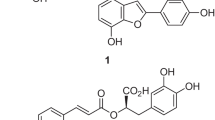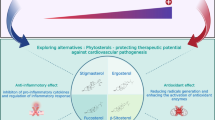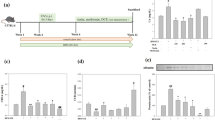Abstract
During the recent years, much great deal of research has been conducted on potential use of certain herbs and nutraceuticals to manage nonalcoholic fatty liver disease (NAFLD), specifically with those strong biological activities and antioxidant ability. In our research, the goal is to investigation the protective efficacy of the ethanol extract of Crataegus orientalis fruits (COE) aganist lipid accumulation in oleic acid (OA)-induced hepatocellular carcinoma cells (HepG2) at the molecular level. Firstly, antioxidant activity and lipoxygenase activity of the C. orientalis were determined in vitro. For induction of lipid accumulation in HepG2, we established an in vitro model using 1 mM OA. The C. orientalis was evaluated for their ability to prevent from lipid accumulation and effects on sterol regulatory element binding protein-1c (SREBP-1c), acetyl CoA carboxylase (ACC1) and fatty acid synthase (FAS) mRNA levels involved in lipid metabolism. The C. orientalis exhibited moderate antioxidant activity against ABTS and DPPH radicals and a significant anti-inflammatory effect against the 5-lipoxygenase enzyme. The results demonstrated that the COE (100 µg/ml) inhibited lipid accumulation (p < 0.01) and was effective in reducing triglyceride (TG) concentration (p < 0.001) and production of reactive oxygen species (ROS) in HepG2 cells (p < 0.05). C. orientalis suppressed mRNA expression of lipid metabolism enzymes (ACC1, FAS) and transcription factor SREBP-1c (p < 0.001, p < 0.001 and p < 0.01, respectively). Our findings recommend that C. orientalis fruits are potentially protective against lipid accumulation in hepatocytes and may have beneficial effects in the treatment of the NAFLD.
Graphical abstract






Similar content being viewed by others
References
Aberg F, Färkkilä M (2020) Drinking and obesity: alcoholic liver disease/nonalcoholic fatty liver disease interactions. Semin Liver Dis 40(02):154–162. https://doi.org/10.1055/s-0040-1701443
Akbulut HF, Akbulut M (2023) Mineral composition, the profile of phenolic compounds, organic acids, sugar and in vitro antioxidant capacity, and antimicrobial activity of organic extracts of Juniperus drupacea fruits. Food Sci Nutr 11(10):6435–6446. https://doi.org/10.1002/fsn3.3586
Balaiya S, Chalam KV (2014) An in vitro assay to quantify nitrosative component of oxidative stress. J Mol Genet Med 8(3):120. https://doi.org/10.4172/1747-0862.1000120
Bardakci H, Celep E, Gözet T, Kan Y, Kırmızıbekmez H (2019) Phytochemical characterization and antioxidant activities of the fruit extracts of several Crataegus taxa. S Afr J Bot 124:5–13. https://doi.org/10.1016/j.sajb.2019.04.012
Bertolio R, Napoletano F, Mano M, Maurer-Stroh S, Fantuz M, Zannini A, Bicciato S, Sorrentino G, Del Sal G (2019) Sterol regulatory element binding protein 1 couples mechanical cues and lipid metabolism. Nat Commun 10:1326. https://doi.org/10.1038/s41467-019-09152-7
Bor Z, Arslan R, Bektaş N, Pırıldar S, Dönmez A (2012) Antinociceptive, anti-inflammatory, and antioxidant activities of the ethanol extract of Crataegus orientalis leaves. Turk J Med Sci 42(2):315–324. https://doi.org/10.3906/sag-1011-1304
Chen Q, Wang T, Li J, Wang S, Qiu F, Yu H, Zhang Y, Wang T (2017) Effects of natural products on fructose-induced nonalcoholic fatty liver disease (NAFLD). Nutrients 9(2):96. https://doi.org/10.3390/nu9020096
Cheng H, Xu N, Zhao W, Su J, Liang M, Xie Z, Wu X, Li Q (2017) Epicatechin regulates blood lipids and attenuates hepatic steatosis in rats fed high-fat diet. Mol Nutr Food Res 61(11):1700303. https://doi.org/10.1002/mnfr.201700303
Chinnadurai GS, Krishnan S, Perumal P (2018) Studies on detection and analysis of proteases in leaf extract of medicinally important plants. J Phytomedicine 40:176–188. https://doi.org/10.1016/j.phymed.2018.01.011
Çoklar H, Akbulut M (2016) The change in antioxidant activity, total phenolic content and phenolic profile of hawthorn (Crataegus orientalis) fruit with maturity. Int J Fruit Sci 3(2):30–37
Cotter TG, Rinella M (2020) Nonalcoholic fatty liver disease 2020: the state of the disease. J Gastroenterology 158(7):1851–1864. https://doi.org/10.1053/j.gastro.2020.01.052
Cui K, Zhang S, Jiang X, Xie W (2016) Novel synergic antidiabetic effects of Astragalus polysaccharides combined with Crataegus flavonoids via improvement of islet function and liver metabolism. Mol Med Rep 13:4737–4744. https://doi.org/10.3892/mmr.2016.5140
Dehghani S, Mehri S, Hosseinzadeh H (2019) The effects of Crataegus pinnatifida (Chinese hawthorn) on metabolic syndrome: a review. Iran J Basic Med Sci 22:460–468. https://doi.org/10.22038/IJBMS.2019.31964.7678
Delli Bovi AP, Marciano F, Mandato C, Siano MA, Savoia M, Vajro P (2021) Oxidative stress in non-alcoholic fatty liver disease. An updated mini review. Front Med (lausanne) 8:595371. https://doi.org/10.3389/fmed.2021.595371
Deprince A, Haas JT, Staels B (2020) Dysregulated lipid metabolism links NAFLD to cardiovascular disease. Mol Metab 42:1–15. https://doi.org/10.1016/j.molmet.2020.101092
Dhami-shah H, Vaidya R, Talwadekar M, Udipi S, Kolthur-seetharam U, Vaidya A (2018) Picroside ii reduces lipid accumulation, oxidative stress and mitochondrial dysfunction in in vitro NAFLD HepG2 cell model. JHEP 8(1):40–41. https://doi.org/10.1016/j.jceh.2018.06.343
Erarslan ZB, Kültür Ş (2019) Leaf anatomical traits of Crataegus orientalis Pall. ex M.Bieb. (Rosaceae) from Turkey. J Res Pharm 23(5):804–811. https://doi.org/10.35333/jrp.2019.28
Eynaudi A, Díaz-Castro F, Bórquez JC, Bravo-Sagua RB, Valentina Parra V, Troncoso R (2021) Differential effects of oleic and palmitic acids on lipid droplet-mitochondria interaction in the hepatic cell line HepG2. Front Nutr 8:775382. https://doi.org/10.3389/fnut.2021.775382
Feng Y, Gao S, Zhu T, Sun G, Zhang P, Huang Y, Qu S, Du X, Mou D (2022) Hawthorn fruit acid consumption attenuates hyperlipidemia-associated oxidative damage in rats. Front Nutr 9:936229. https://doi.org/10.3389/fnut.2022.936229
Furukawa S, Fujita T, Shimabukuro M, Iwaki M, Yamada Y, Nakajima Y, Nakayama O, Makishima M, Matsuda M, Shimomura I (2004) Increased oxidative stress in obesity and its impact on metabolic syndrome. J Clin Invest 114(12):1752–1761. https://doi.org/10.1172/JCI21625
Gao X, Ohlander M, Jeppsson N, Björk L, Trajkovski V (2000) Changes in antioxidant effects and their relationship to phytonutrients in fruits of sea buckthorn (Hippophae rhamnoides L.) during Maturation. J Agric Food Chem 48:1485–1490. https://doi.org/10.1021/jf991072g
Gülmez G, Şen A, Şekerler T, Algül FK, Çilingir-Kaya ÖT, Şener A (2022) The antioxidant, anti-inflammatory, and antiplatelet effects of Ribes rubrum L. fruit extract in the diabetic rats. J Food Biochem 46(7):e14124
Guo L, Li X, Tang QQ (2015) Transcriptional regulation of adipocyte differentiation: a central role for CCAAT/enhancer-binding protein (C/EBP) beta. J Biol Chem 290:755–761. https://doi.org/10.1074/jbc.R114.619957
Hannah V, Ou J, Luong A, Goldstein J, Brown M (2001) Unsaturated fatty acids down-regulate srebp isoforms 1a and 1c by two mechanisms in hek-293 cells. J Biol Chem 276(6):v4365-4372. https://doi.org/10.1074/jbc.M007273200
Hliwa A, Ramos-Molina B, Laski D, Mika A, Sledzinski T (2021) The role of fatty acids in non-alcoholic fatty liver disease progression: an update. Int J Mol Sci 22(13):6900. https://doi.org/10.3390/ijms22136900
Hu M, Zeng W, Tomlinson B (2014) Evaluation of a Crataegus-based multiherb formula for dyslipidemia: a randomized, double-blind, placebo-controlled clinical trial. eCAM. https://doi.org/10.1155/2014/365742
Kumar D, Arya V, Bhat ZA, Khan NA, Prasad DN (2012) The genus Crataegus: chemical and pharmacological perspectives. Rev Bras 22(5):1187–1200. https://doi.org/10.1590/S0102-695X2012005000094
Le Lay S, Simard G, Martinez MC, Andriantsitohaina R (2014) Oxidative stress and metabolic pathologies. From an adipocentric point of view. Oxid Med Cell Longev. https://doi.org/10.1155/2014/908539
Li Z, Xu J, Zheng P, Xing L, Shen H, Yang L, Zhang L, Ji G (2015) Hawthorn leaf flavonoids alleviate nonalcoholic fatty liver disease by enhancing the adiponectin/AMPK pathway. Int J Clin Exp Med 8(10):17295–17307
Lizuka K, Bruick RK, Liang G, Horton JD, Uyeda K (2004) Deficiency of carbohydrate response element-binding protein (ChREBP) reduces lipogenesis as well as glycolysis. Proc Natl Acad Sci USA 101(19):7281–7286. https://doi.org/10.1073/pnas.0401516101
Lounis MA, Bergeron KF, Burhans MS, Ntambi JM, Mounier C (2017) Oleate activates SREBP-1 signaling activity in SCD1-deficient hepatocytes. Am J Physiol Endocrinol Metab 313(6):E710–E720. https://doi.org/10.1152/ajpendo.00151
Lu X, Zhong R, Sun H, Zheng B, Chen L, Miao S, Liang P (2019) Inhibition effect of triglyceride accumulation by large yellow croaker roe DHA-PC in HepG2 cells. Mar Drugs 17(9):485. https://doi.org/10.3390/md17090485
Mazidia M, Katsikib N, Banach M (2019) A higher flavonoid intake is associated with less likelihood of nonalcoholic fatty liver disease: results from a multiethnic study. J Nutr Biochem 65:66–71. https://doi.org/10.1016/j.jnutbio.2018.10.001
Moravcová A, Červınková Z, Kučera O, Mezera V, Rychtrmoc D, Lotková H (2015) The effect of oleic and palmitic acid on induction of steatosis and cytotoxicity on rat hepatocytes in primary culture. Physiol Res 64(5):627–636. https://doi.org/10.33549/physiolres.933224
Mosmann T (1983) Rapid colorimetric assay for cellular growth and survival: application to proliferation and cytotoxicity assays. J Immunol Methods 65(1–2):55–63. https://doi.org/10.1016/0022-1759(83)90303-4
Phosrithong N, Nuchtavorn N (2016) Antioxidant and anti-inflammatory activites of Clerodendrum leaf extracts collected in Thailand. EuJIM 8(3):281–285. https://doi.org/10.1016/j.eujim.2015.10.002
Rababa’h AM, Al Yacoub ON, El-Elimat T, Rabab’ah M, Altarabsheh S, Deo S, Al- Azayzih A, Zayed A, Alazzam S, Alzoubi KH (2020) The effect of hawthorn flower and leaf extract (Crataegus Spp.) on cardiac hemostasis and oxidative parameters in Sprague Dawley rats. Heliyon 6:1–6. https://doi.org/10.1016/j.heliyon.2020.e04617
Refaat AT, Shahat AA, Ehsan NA, Yassin N, Hammouda F, Tabl EA, Ismail SI (2010) Phytochemical and biological activities of Crataegus sinaica growing in Egypt. Asian Pacific J Trop Med 3(4):257–261. https://doi.org/10.1016/S1995-7645(10)60062-4
Ricchi M, Odoardi MR, Carulli L, Anzivino C, Ballestri S, Pinetti A, Fantoni LI, Marra F, Bertolotti M, Banni S, Lonardo A, Carulli N, Loria P (2009) Differential effect of oleic and palmitic acid on lipid accumulation and apoptosis in cultured hepatocytes. JGH 24(5):830–840. https://doi.org/10.1111/j.1440-1746.2008.05733.x
Saeedi G, Jeivad F, Goharbari M, Gheshlaghi GH, Sabzevari O (2018) Ethanol extract of Crataegus oxyacantha L. ameliorate dietary non-alcoholic fatty liver disease in rat. Drug Res (stuttg) 10:553–559. https://doi.org/10.1055/a-0579-7532
Salomone F, Godos J, Zelber-Sagi S (2016) Natural antioxidants for non-alcoholic fatty liver disease: molecular targets and clinical perspectives. Liver Int 36(1):5–20. https://doi.org/10.1111/liv.12975
Šavikin KP, Krstić-Milošević D, Menkovič NR, Beara I (2017) Crataegus orientalis leaves and berries: phenolic profiles, antioxidant and anti-inflammatory activity. Nat Prod Commun 12(2):159–162. https://doi.org/10.1177/1934578X1701200204
Shabalala SC, Dludla PV, Mabasa L, Kappo AP, Basson AK, Pheiffer C, Johnson R (2020) The effect of adiponectin in the pathogenesis of non-alcoholic fatty liver disease (NAFLD) and the potential role of polyphenols in the modulation of adiponectin signaling. Biomed Pharmacother 131:2–17. https://doi.org/10.1016/j.biopha.2020.110785
Shi A, Li T, Zheng Y, Song Y, Wang H, Wang N, Dong L, Shi H (2021) Chlorogenic acid improves NAFLD by regulating gut microbiota and GLP-1. J Front Pharmacol 12:693048. https://doi.org/10.3389/fphar.2021.693048
Singh A, Pandey G, Saraswat VA (2018) Assesment of clinical and metabolic profile and presentation of lean NAFLD. JCEH 8(1):41–42. https://doi.org/10.1016/j.jceh.2018.06.345
Sun B, Zhang R, Liang Z, Fan A, Kang D (2021) Hyperoside attenuates non-alcoholic fatty liver disease through targeting Nr4A1 in macrophages. Int Immunopharmacol 94:107438. https://doi.org/10.1016/j.intimp.2021.107438
Wang SR, Pessah M, Infante J, Catala D, Salvat C, Infante R (1988) Lipid and lipoprotein metabolism in Hep G2 cells. Biochim Biophys Acta 961(3):351–363. https://doi.org/10.1016/0005-2760(88)90082-3
Wang S, Sheng F, Zou L, Xiao J, Li P (2021) Hyperoside attenuates non-alcoholic fatty liver disease in rats via cholesterol metabolism and bile acid metabolism. J Adv Res 34:109–122. https://doi.org/10.1016/j.jare.2021.06.001
Warburg O, Christian W (1942) Isolation and crystallization of enolase. Biochem Z 310:384–421. https://doi.org/10.1007/BF01482279
Wat E, Wang Y, Chan K, Law HW, Koon CM, Lau KM, Leung PC, Yan C, Lau CBS (2018) An in vitro and in vivo study of a 4-herb formula on the management of diet-induced metabolic syndrome. J Phytomedicine 42:112–125. https://doi.org/10.1016/j.phymed.2018.03.028
Xu X, So JS, Park JG, Lee AH (2013) Transcriptional control of hepatic lipid metabolism by SREBP and ChREBP. Semin Liver Dis 33(4):301–311. https://doi.org/10.1073/pnas.0401516101
Xu J, Gao L, Liang H, Zhang S, Lai P, Chen S (2021) Evidence for the anti-NAFLD effectiveness of chlorogenic acid as a HAT inhibitor using in vivo experiments supported by virtual molecular docking. J Phytomedicine plus 1(4):100055. https://doi.org/10.1016/j.phyplu.2021.100055
Yang JP, Shin JH, Seo SH, Kim SG, Lee SH, Shin EH (2018) Effects of antioxidants in reducing accumulation of fat in hepatocyte. Int J Mol Sci 19(9):2563. https://doi.org/10.3390/ijms19092563
Yeşilada E, Üstün O, Sezik E, Takaishi Y, Ono Y, Honda G (1997) Inhibitory effects of Turkish folk remedies on inflammatory cytokines: interleukin-1α, interleukin-1β and tumor necrosis factor α. J Ethnopharmacology 58(1):59–73. https://doi.org/10.1016/s0378-8741(97)00076-7
Yıldırım A, Şen A, Doğan A, Bitis L (2019) Antioxidant and anti-inflammatory activity of capitula, leaf and stem extracts of Tanacetum cilicicum (Boiss.) Grierson. IJSM 6(2):211–222. https://doi.org/10.21448/ijsm.510316
Yusuf JB, Meriçli AH (2016) Pharmacological activities of Crataegus species: a review. IJMRAP 3(4):73–76
Zhang Z, Ho WKK, Huang Y, James AE, Lam LW, Chen ZY (2001) Hawthorn fruit is hypolipidemic in rabbits fed a high cholesterol diet. Biochem Mol Action Nutr 132:5–10. https://doi.org/10.1093/jn/132.1.5
Zheng H, Zhao J, Zheng Y, Wu J, Liu Y, Peng J, Zhenfeng H (2014) Protective effects and mechanisms of total alkaloids of Rubus alceaefolius Poir on non-alcoholic fatty liver disease in rats. Mol Med Rep 10:1758–1764. https://doi.org/10.3892/mmr.2014.2403
Zou Y, Chang SKC, Gu Y, Qian SY (2011) Antioxidant activity and phenolic compositions of lentil (Lens culinaris var. Morton) extract and its fractions. J Agric Food Chem 59(6):2268–2276. https://doi.org/10.1021/jf104640k
Acknowledgements
The author would like to thank Assist. Prof. İsmail Şenkardeş (Department of Pharmaceutical Botany, Faculty of Pharmacy, Marmara University, Istanbul, Turkey) for his help in identification of the plant material. All authors declare no conflicts of interest.
Funding
This research was supported by Marmara University Scientific Research Projects Commission (Project No: SAG-C-YLP- 110718-0432). The funder had no role in study design, data collection and analysis, decision to publish, or preparation of the manuscript.
Author information
Authors and Affiliations
Contributions
Kader Fatma Algül: Investigation, Conceptualization, Designing the Experiments, Analyzing the Data, Writing—Original Draft. Azize Şener: Supervision, Project administration, Analyzing the Data, Writing—Review, Editing. Ali Şen: Project administration Investigation. Turgut Şekerler: Investigation, Writing. Gizem Gülmez; Investigation Writing All authors contributed to editing and revising the manuscript. All authors read and approved this version for submission.
Corresponding author
Ethics declarations
Ethical statement
The ethical approval was obtained Marmara University Animal Care and Use Committee (Protocol number: 99.2018.mar).
Conflict of interest
Kader Fatma Algül has no conflict of interest. Turgut Şekerler has no conflict of interest. Ali Şen has no conflict of interest. Gizem Gülmez has no conflict of interest. Azize Şener has no conflict of interest.
Additional information
Publisher's Note
Springer Nature remains neutral with regard to jurisdictional claims in published maps and institutional affiliations.
Rights and permissions
Springer Nature or its licensor (e.g. a society or other partner) holds exclusive rights to this article under a publishing agreement with the author(s) or other rightsholder(s); author self-archiving of the accepted manuscript version of this article is solely governed by the terms of such publishing agreement and applicable law.
About this article
Cite this article
Algül, K.F., Şekerler, T., Şen, A. et al. Effects of Crataegus orientalis fruit extract on lipid accumulation in oleic acid-induced HepG2 cells. ADV TRADIT MED (ADTM) (2024). https://doi.org/10.1007/s13596-024-00750-5
Received:
Accepted:
Published:
DOI: https://doi.org/10.1007/s13596-024-00750-5




